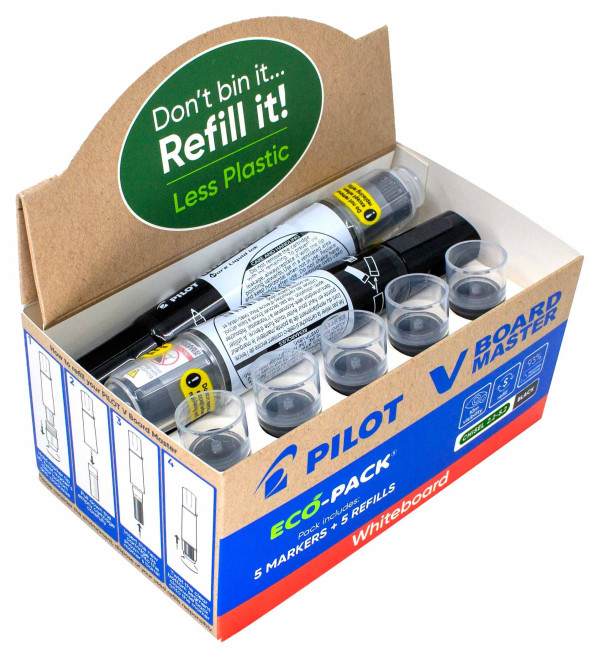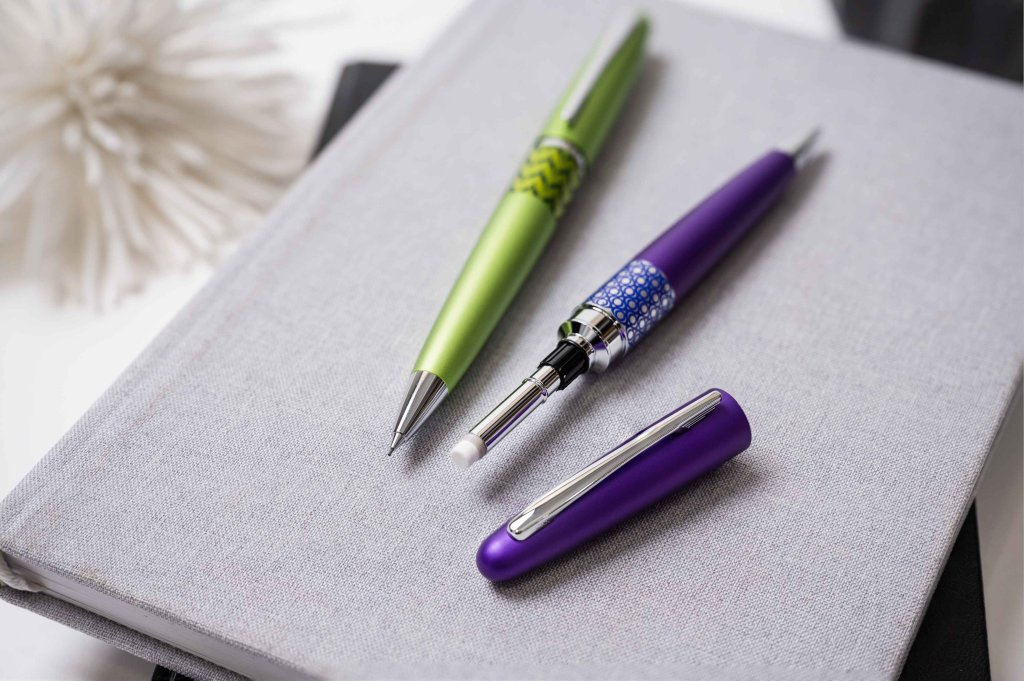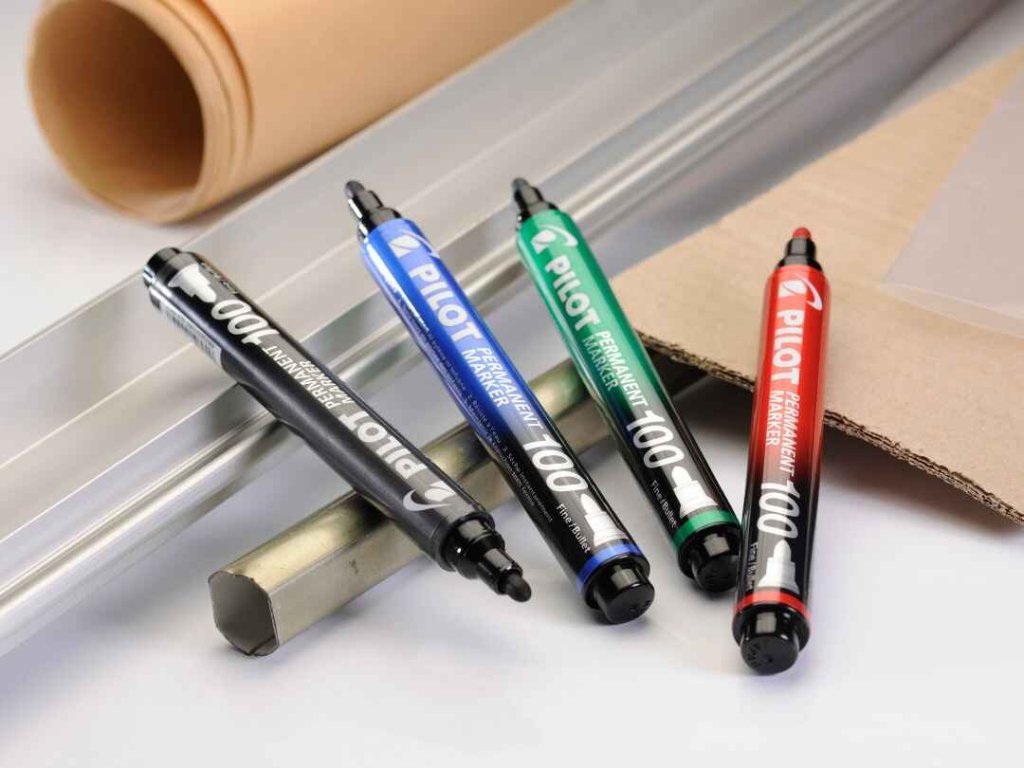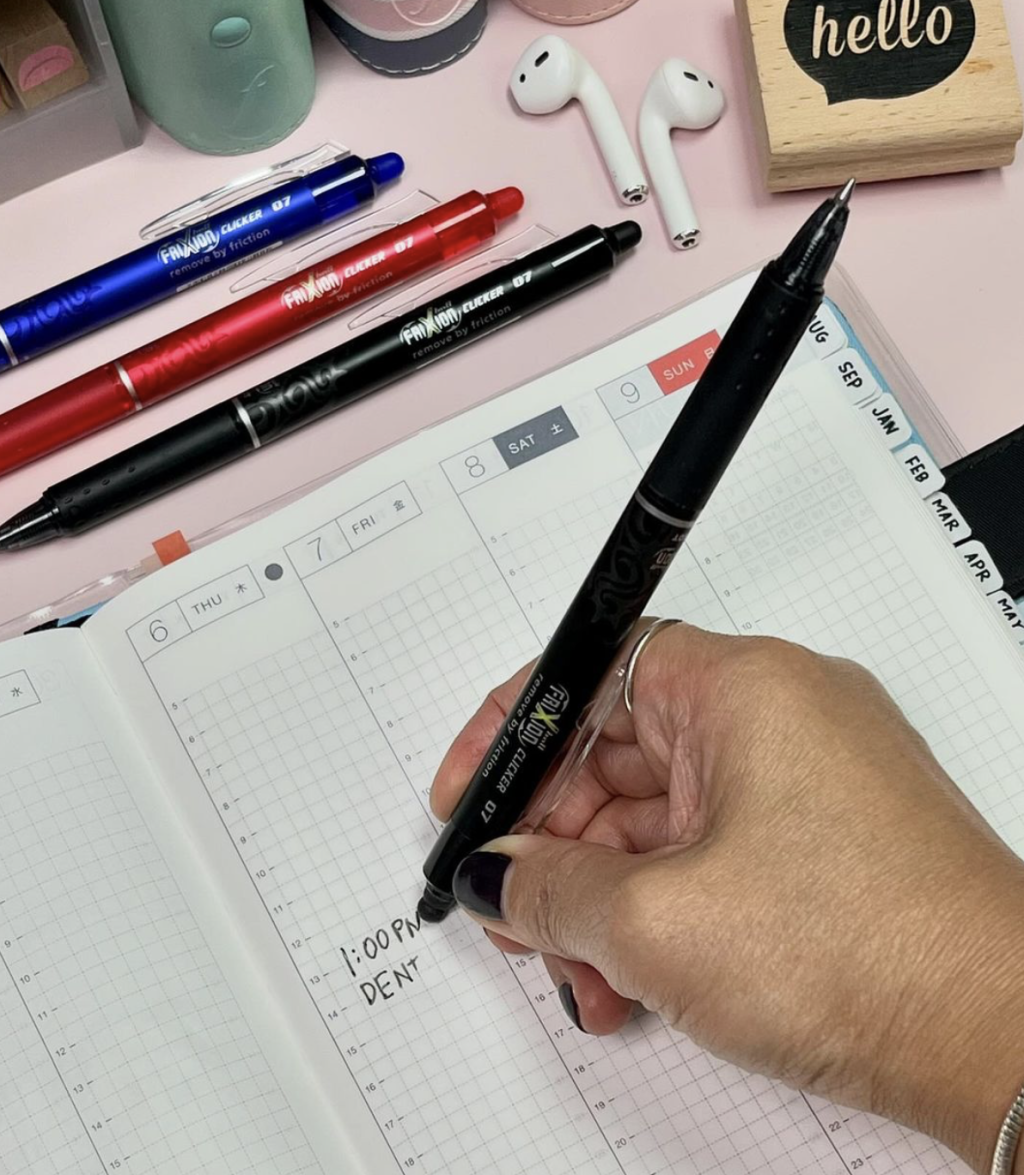Key Takeaways
Mechanical pencils are writing instruments with replaceable and mechanically extendable lead, offering continuous use without the need for sharpening, unlike traditional wooden pencils.
The evolution of mechanical pencils began in 1565 with the lead holder pencil and saw significant advancements through the 19th and 20th centuries, including the development of push-button, twist, and shaker mechanisms for lead advancement.
Choosing the right mechanical pencil involves considering factors such as lead size, grip ergonomics, and built-in features, which contribute to user comfort and performance during various tasks such as note-taking, technical drawing, and artistic work.
What Are Mechanical Pencils?
A mechanical pencil is a writing instrument with a replaceable, extendable solid pigment core, called ‘lead’. Mechanical pencils have a refillable lead mechanism, eliminating the need for sharpening. This design has earned them various names worldwide, including:
microtip pencils
automatic pencils
drafting pencils
propelling pencils
Mechanical Pencil vs Wooden Pencil
The key difference between mechanical and wooden pencils is the lead. Wooden pencils have a single bonded graphite core, while mechanical pencils use separate, replaceable graphite leads in various sizes and hardness levels. Mechanical pencils are either designed to actively propel the lead forward or hold it in position. This versatility makes them popular among students, artists, and professionals.
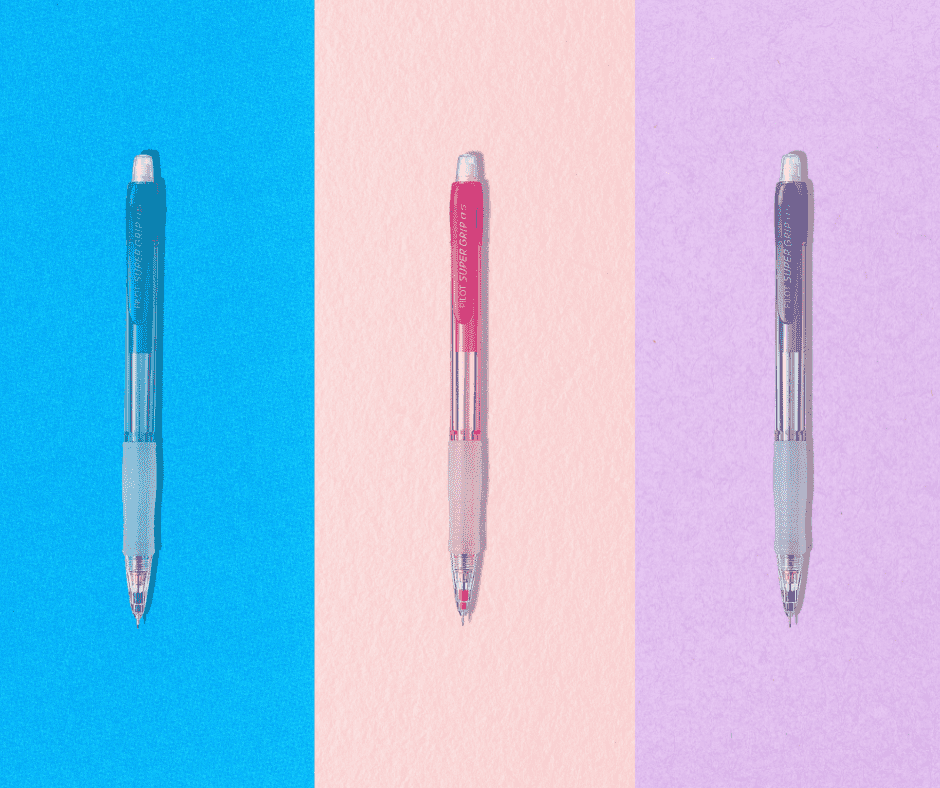
The History of Mechanical Pencils
Swiss naturalist Conrad Gesner kickstarted the journey of the mechanical pencil in 1565 with his invention of a primitive version, the lead holder pencil. However, it wasn’t until 1822 that the first mechanical pencil with a mechanism to propel and replace the lead was patented by Sampson Mordan and John Isaac Hawkins in Britain. This invention marked a significant milestone in the evolution of writing instruments, setting the stage for further innovations.
Mechanical pencil technology underwent rapid advancements in the following decades. Between 1822 and 1874, more than 160 patents were registered for improvements to mechanical pencils, showcasing the intense interest and innovation in this field. Notable developments included the appearance of the spring-loaded mechanical pencil in 1877 and the first twist-feed mechanism in 1895.
A particularly fascinating discovery was made in 1977 when a mechanical pencil was found aboard the HMS Pandora, which had sunk in 1791, indicating that early versions of these writing instruments were more common than previously thought. The 20th century brought further refinements, with Tokuji Hayakawa’s ‘Ever-Ready Sharp Pencil’ in 1915 leading to the founding of the Sharp Corporation, and Charles R. Keeran developing a ratchet-based mechanical pencil around the same time in America. These innovations paved the way for the diverse range of mechanical pencils we see today.
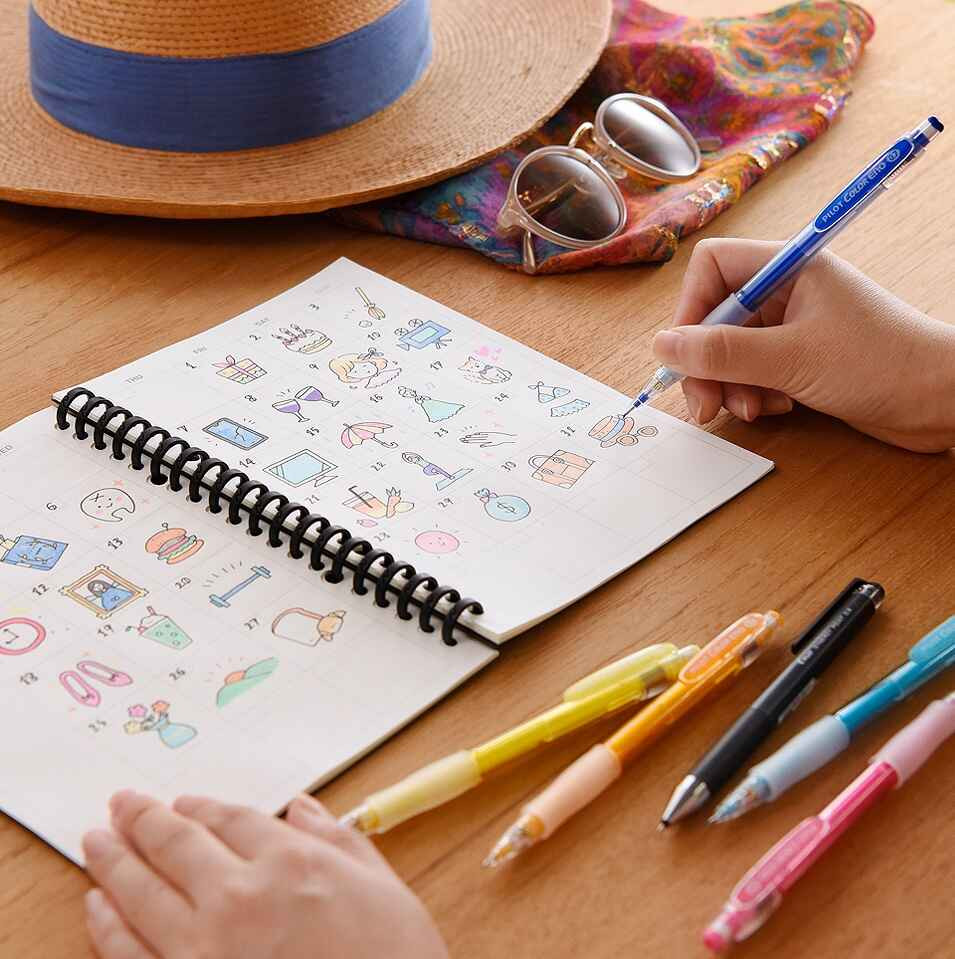
How Mechanical Pencils Work
Mechanical pencils feature a replaceable, extendable solid pigment core, typically graphite, allowing for continuous use without sharpening. Various lead advancement mechanisms, such as push-button, twist, and shaker systems, enable smooth and precise lead extension.
Push-Button Mechanism
The push-button mechanism is the most common system, where pressing a button at the end of the pencil activates a clutch that moves the lead forward. This system is known for its precision and ease of use, making it popular among students and professionals.
Twist Mechanism
The twist mechanism involves rotating a part of the pencil to activate a screw mechanism that extends the lead. This system offers precise control over lead length, ideal for artists and drafters who require fine-line control.
Shaker Mechanism
The shaker mechanism allows users to extend the lead by shaking the pencil. A weight inside the cap moves when shaken, triggering the lead advancement. This system provides convenience during continuous writing or drawing sessions.
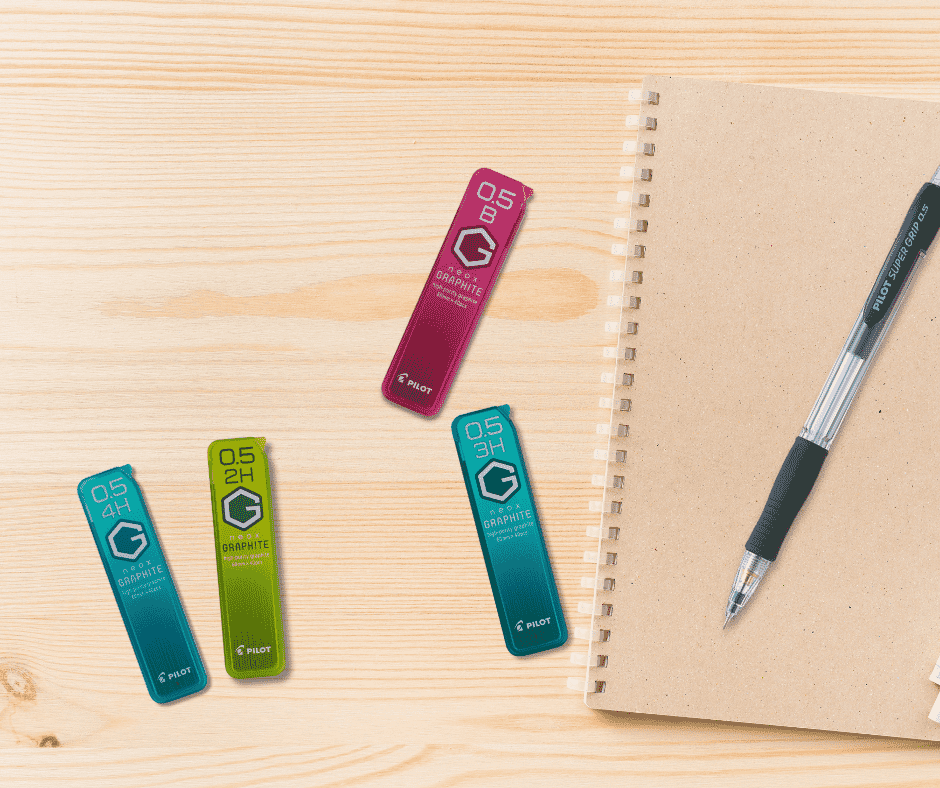
Choosing the Right Mechanical Pencil
Selecting the perfect mechanical pencil involves considering key factors that match your needs. Whether for note-taking, solving equations, or sketching, the right pencil enhances your experience. Focus on lead size, grip ergonomics, and built-in features for optimal performance and comfort.
Lead Sizes and Thickness
Lead size affects line thickness and overall experience. Modern mechanical pencils offer various lead sizes:
0.3 mm for fine details
0.5 mm for general use
0.7 mm for standard writing
2 mm for bold lines
Lead hardness also matters, with options like PILOT’s G Neox Graphite lead refills ranging from 4H to 4B, catering to different needs.
Grip and Ergonomics
Grip comfort is crucial for extended use. Common grip types include:
Knurled grip: Non-slip but can be rough.
Rubber grips: Comfortable for long sessions.
Silicone grips: Soft and flexible.
Ergonomic grips: Contoured for reduced strain.
A hexagonal body design can enhance grip stability and prevent the pencil from rolling off the desk, ensuring a comfortable writing or drawing experience.
Try different grips to find the most comfortable one. PILOT offers ergonomic designs like the Progrex and Super Grip Mechanical Pencils, minimising hand fatigue and enhancing comfort.
Built-in Features
Consider features like attached erasers (such as an eraser cap), auto-feed mechanisms, and sliding lead sleeves. These enhance functionality and user experience. For example, the PILOT Super Grip Mechanical Pencil features a retractable tip that protects the lead and ensures safe storage and pocket safe, making it an excellent choice for everyday use. These features improve the mechanical pencil’s utility and convenience.
Benefits of Using Mechanical Pencils
Mechanical pencils offer several advantages over traditional wooden pencils:
Consistent Line Width: Provides uniformity in line thickness, essential for technical drawing and legible writing.
Convenience: No need for sharpening, allowing continuous use without interruption.
Sustainability: Refillable leads reduce waste and are more cost-effective in the long run.
Versatility: Easily switch between different lead thicknesses and hardness levels to suit various tasks.
Durability: High-polymer leads are stronger and less prone to breakage, offering improved durability.
These benefits make mechanical pencils a favourite among students, artists, and professionals alike.
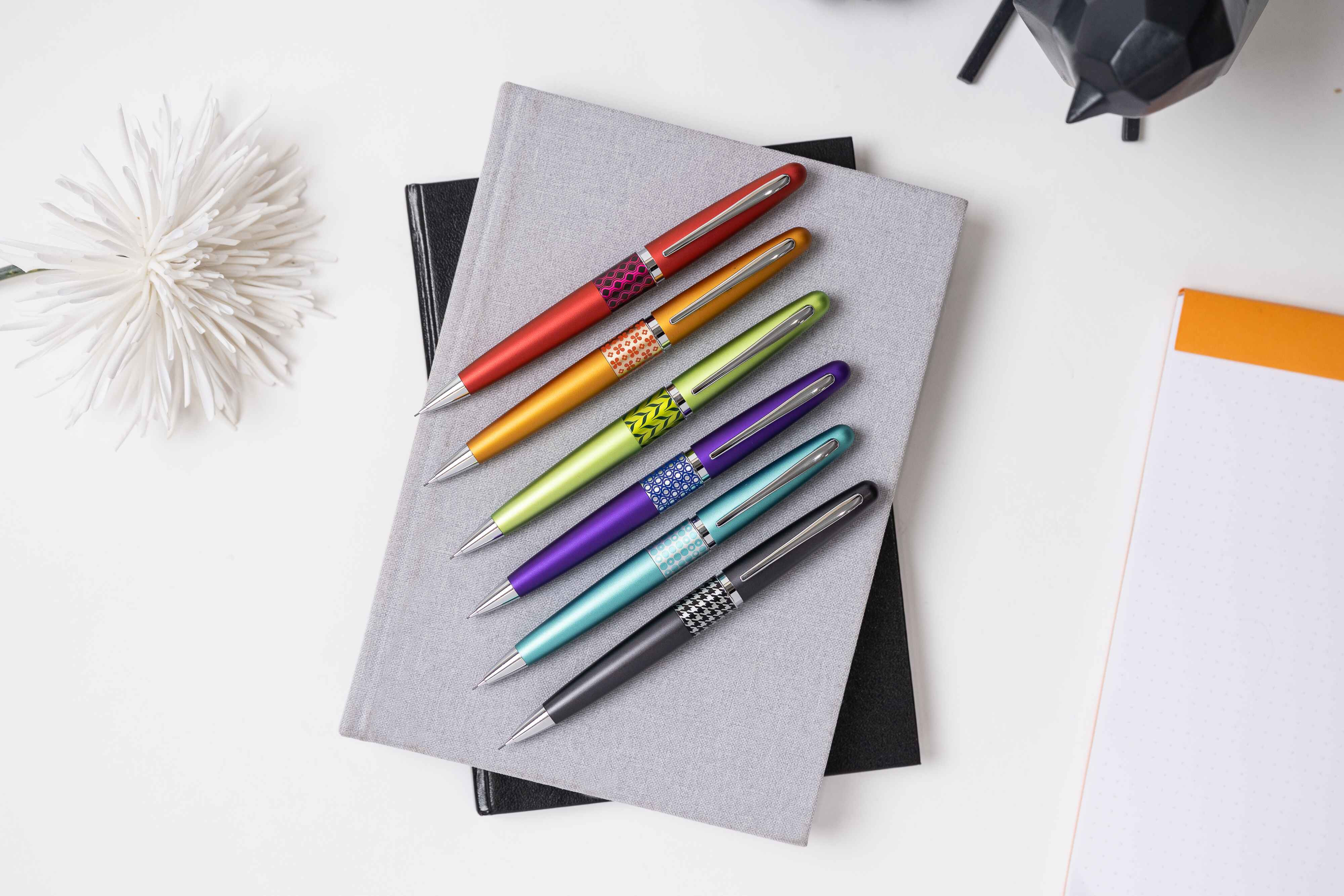
Key Features of PILOT Mechanical Pencils
PILOT is a recognised leader in mechanical pencil innovation, known for thoughtful design, quality construction, and user-centric features. Their range includes customisable options like the MR3 Retro Pop Mechanical and precision-engineered models like the Progrex Mechanical Pencil.
Comfortable Grip
PILOT mechanical pencils are designed for user comfort. The Super Grip Mechanical Pencil, for instance, features an ergonomic design that reduces hand strain during extended use. It offers a soft rubber grip for long writing sessions and is made from 71% recycled plastic, emphasising sustainability.
Durable Leads
PILOT uses high-quality leads like Progrex Polymer Leads and G Neox Graphite leads, ensuring smooth, reliable writing. G Neox Graphite leads are made from high-purity graphite, producing smooth, sharp, and dark lines, reducing lead breakage and enhancing the writing experience. These high-quality leads significantly reduce the risk of broken lead, making PILOT mechanical pencils more reliable and functional.
Sustainable Materials
PILOT emphasises sustainability with models like the Rexgrip Mechanical Pencil, made from 74% recycled plastic, and the Progrex Mechanical Pencil, made from 71% recycled plastic. This eco-friendly approach reduces plastic waste while maintaining quality and performance.
Coloured Lead Options
PILOT also offers the Color Eno Mechanical Pencils, featuring vibrant, refillable, and easily erasable coloured leads. These pencils provide a smooth and break-resistant writing experience and are available in multiple colours. Ergonomically designed, they are perfect for colour-coding, art projects, and highlighting notes.
These features make PILOT mechanical pencils popular among writers, artists, and professionals.
Applications of Mechanical Pencils
Mechanical pencils are versatile tools used in various fields and professions. Their precision, consistency, and convenience make them ideal for tasks such as:
Taking notes
Sketching
Creating technical drawings
Writing manuscripts
For Students
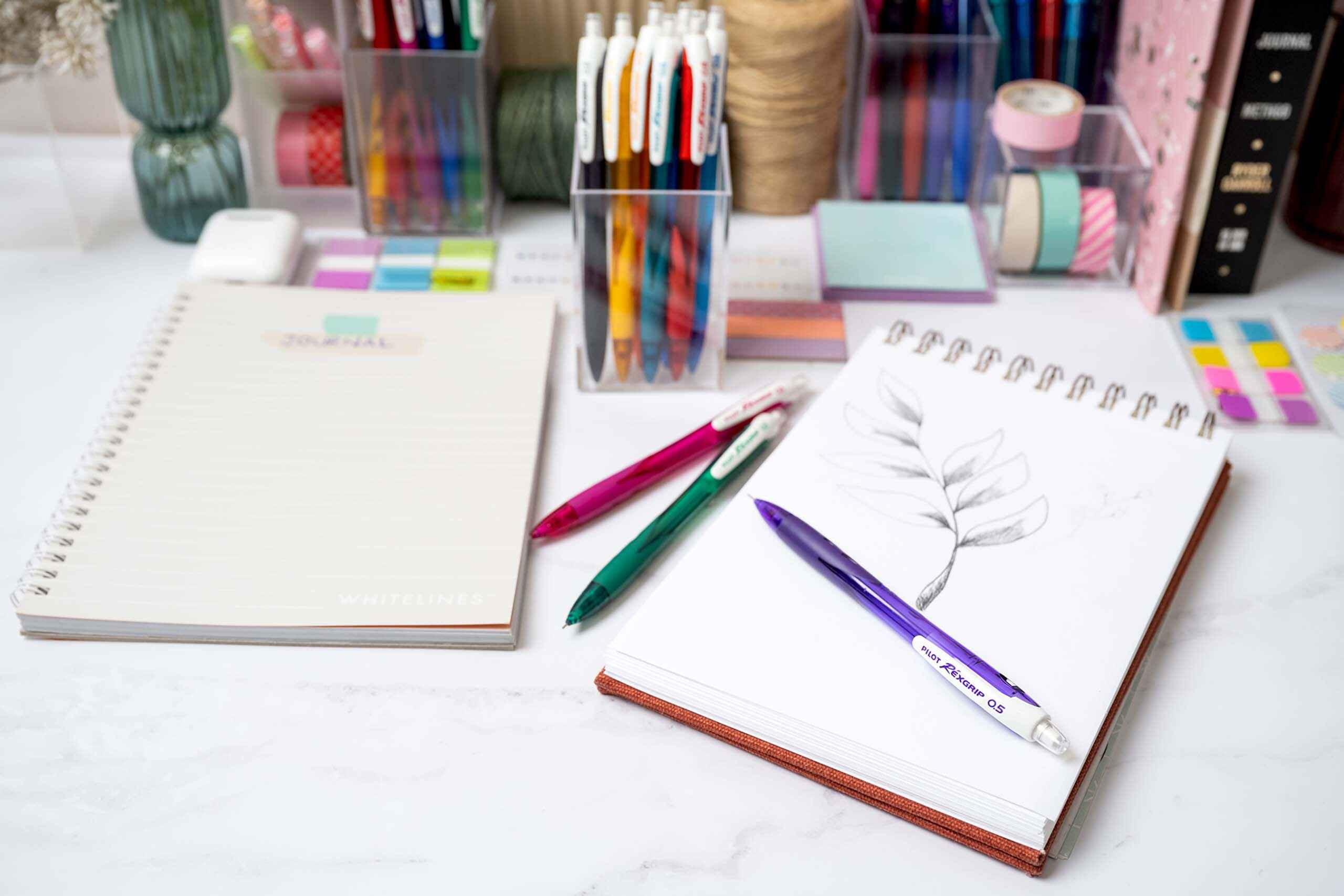 For students, mechanical pencils offer consistency and clarity in note-taking, drawing diagrams, and solving maths problems. They eliminate the need for sharpening, ensure crisp, legible notes, and allow for corrections, such as in multiple-choice tests. This saves time during exams, making mechanical pencils a preferred choice for many students. With features such as built-in erasers, various lead sizes, and comfortable grip designs, there's a perfect mechanical pencil for every subject, from maths to art.
For students, mechanical pencils offer consistency and clarity in note-taking, drawing diagrams, and solving maths problems. They eliminate the need for sharpening, ensure crisp, legible notes, and allow for corrections, such as in multiple-choice tests. This saves time during exams, making mechanical pencils a preferred choice for many students. With features such as built-in erasers, various lead sizes, and comfortable grip designs, there's a perfect mechanical pencil for every subject, from maths to art.
For Artists
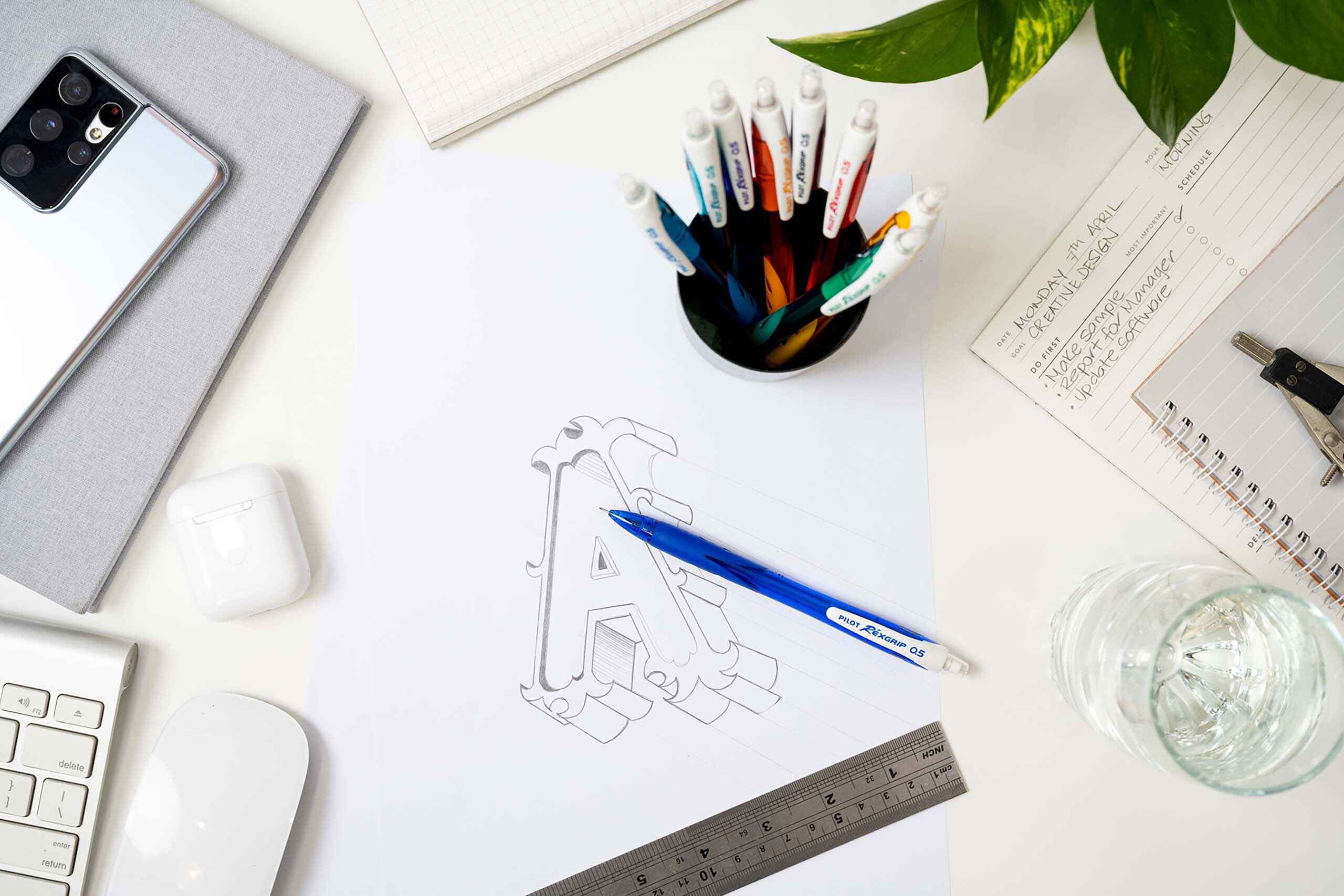 Artists benefit from the precision of mechanical pencils, which allow for fine details and consistent line width. This is crucial for clean, professional-looking sketches and drawings. The variety of lead sizes and hardness levels available makes them ideal for different stages of the artistic process. Additionally, artists can use coloured lead for drawing, which adds a vibrant dimension to their work. For instance, PILOT offers Color Eno Mechanical Pencils that come with refillable and easily erasable coloured leads, perfect for adding some depth to creative projects.
Artists benefit from the precision of mechanical pencils, which allow for fine details and consistent line width. This is crucial for clean, professional-looking sketches and drawings. The variety of lead sizes and hardness levels available makes them ideal for different stages of the artistic process. Additionally, artists can use coloured lead for drawing, which adds a vibrant dimension to their work. For instance, PILOT offers Color Eno Mechanical Pencils that come with refillable and easily erasable coloured leads, perfect for adding some depth to creative projects.
For Professionals

In fields like architecture, engineering, and design, mechanical pencils are essential for creating precise technical drawings. Benefits include consistent line width, easy erasing, no need for sharpening, and flexibility with different lead sizes and hardness.
Frequently Asked Questions
What are the main advantages of using a mechanical pencil over a traditional wooden pencil?
The main advantages of using a mechanical pencil over a traditional wooden pencil include consistent line width without sharpening, cost-effectiveness in the long run, and greater precision and control, making them ideal for technical drawing and detailed work.
How do I choose the right lead size for my mechanical pencil?
Choose a lead size based on your specific needs, considering factors like writing or drawing style and the level of detail required. For general writing and note-taking, 0.5mm or 0.7mm leads are common and versatile options. Note that some mechanical pencils have a fixed size for lead and therefore the most important thing is to check your pencil refill compatibility before you buy. For PILOT mechanical pencils you can use the Refill Finder Tool to ensure it's a match!
Are PILOT mechanical pencils environmentally friendly?
Yes, PILOT mechanical pencils, such as the Rexgrip model, are environmentally friendly because they are made from a high percentage of recycled plastic and are refillable, reducing waste compared to disposable writing instruments. This demonstrates PILOT Pen Australia's commitment to using sustainable materials.
Can mechanical pencils be used for artistic sketching?
Yes, mechanical pencils can be used for artistic sketching because they offer precision, consistency, and a variety of lead sizes and hardness levels, allowing artists to achieve different effects and tones in their drawings.
How to Fix a Lead Jam in Most Mechanical Pencils?
Fixing lead jams in your mechanical pencil is a straightforward process that can restore your pencil to perfect working condition. Follow these steps:
Remove the Lead: Start by unscrewing or pulling apart the pencil to access the lead chamber. Remove any visible pieces of lead.
Clear the Jam: Use a thin, pointed object like a needle or a specialised cleaning tool that is thinner than the lead thickness, to gently push out the jammed lead inside the pencil. Be careful not to damage the internal mechanism.
Check the Mechanism: While the pencil is disassembled, inspect the lead advancement mechanism for any stuck pieces. Clean out any debris or broken lead fragments.
Reassemble the Pencil: Once the jam is cleared, reassemble the pencil and insert a piece of new lead. Test the pencil to ensure the lead advances smoothly.
By following these steps, you can quickly fix a jam and get back to writing or drawing with your mechanical pencil.
Understanding Mechanical Pencils
Mechanical pencils have evolved from simple writing tools to sophisticated instruments that cater to various needs across different fields. From their beginnings in the 16th century to today’s advanced models, mechanical pencils offer precision, convenience, and versatility. Key features like consistent line width, refillable leads, ergonomic designs, and specialised mechanisms make them indispensable for students, artists, and professionals. For different needs and preferences, consider a few mechanical pencils that offer various features and benefits.
PILOT, a leader in the field, focuses on innovation and quality. Their mechanical pencils feature comfortable grips, durable leads, and sustainable materials, addressing environmental concerns. Mechanical pencils will continue to play a crucial role in writing, drawing, and technical work, combining precision with convenience. Whether taking notes, sketching, or drafting plans, there’s a mechanical pencil to meet your specific needs and enhance your work.
About Author
Sophia Le
Resident Fountain Pen Fanatic at Pilot Pen Australia.
Capless Collector. Staffy Lover. Casual Gamer and Maker.
Currently a Citizen of Super Earth after vacationing in Baldur’s Gate and Hyrule.
